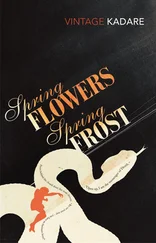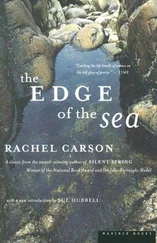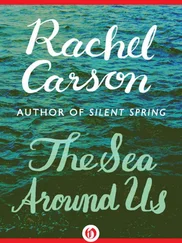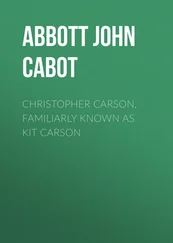And other life looks to the sage. Mule deer often feed on it. Sage may mean survival for winter-grazing livestock. Sheep graze many winter ranges where the big sagebrush forms almost pure stands. For half the year it is their principal forage, a plant of higher energy value than even alfalfa hay.
The bitter upland plains, the purple wastes of sage, the wild, swift antelope, and the grouse are then a natural system in perfect balance. Are? The verb must be changed—at least in those already vast and growing areas where man is attempting to improve on nature’s way. In the name of progress the land management agencies have set about to satisfy the insatiable demands of the cattlemen for more grazing land. By this they mean grassland—grass without sage. So in a land which nature found suited to grass growing mixed with and under the shelter of sage, it is now proposed to eliminate the sage and create unbroken grassland. Few seem to have asked whether grasslands are a stable and desirable goal in this region. Certainly nature’s own answer was otherwise. The annual precipitation in this land where the rains seldom fall is not enough to support good sod-forming grass; it favors rather the perennial bunchgrass that grows in the shelter of the sage.
Yet the program of sage eradication has been under way for a number of years. Several government agencies are active in it; industry has joined with enthusiasm to promote and encourage an enterprise which creates expanded markets not only for grass seed but for a large assortment of machines for cutting and plowing and seeding. The newest addition to the weapons is the use of chemical sprays. Now millions of acres of sagebrush lands are sprayed each year.
What are the results? The eventual effects of eliminating sage and seeding with grass are largely conjectural. Men of long experience with the ways of the land say that in this country there is better growth of grass between and under the sage than can possibly be had in pure stands, once the moisture-holding sage is gone.
But even if the program succeeds in its immediate objective, it is clear that the whole closely knit fabric of life has been ripped apart. The antelope and the grouse will disappear along with the sage. The deer will suffer, too, and the land will be poorer for the destruction of the wild things that belong to it. Even the livestock which are the intended beneficiaries will suffer; no amount of lush green grass in summer can help the sheep starving in the winter storms for lack of the sage and bitterbrush and other wild vegetation of the plains.
These are the first and obvious effects. The second is of a kind that is always associated with the shotgun approach to nature: the spraying also eliminates a great many plants that were not its intended target. Justice William O. Douglas, in his recent book My Wilderness: East to Katahdin, has told of an appalling example of ecological destruction wrought by the United States Forest Service in the Bridger National Forest in Wyoming. Some 10,000 acres of sagelands were sprayed by the Service, yielding to pressure of cattlemen for more grasslands. The sage was killed, as intended. But so was the green, life-giving ribbon of willows that traced its way across these plains, following the meandering streams. Moose had lived in these willow thickets, for willow is to the moose what sage is to the antelope. Beaver had lived there, too, feeding on the willows, felling them and making a strong dam across the tiny stream. Through the labor of the beavers, a lake backed up. Trout in the mountain streams seldom were more than six inches long; in the lake they thrived so prodigiously that many grew to five pounds. Waterfowl were attracted to the lake, also. Merely because of the presence of the willows and the beavers that depended on them, the region was an attractive recreational area with excellent fishing and hunting.
But with the “improvement” instituted by the Forest Service, the willows went the way of the sagebrush, killed by the same impartial spray. When Justice Douglas visited the area in 1959, the year of the spraying, he was shocked to see the shriveled and dying willows—the “vast, incredible damage.” What would become of the moose? Of the beavers and the little world they had constructed? A year later he returned to read the answers in the devastated landscape. The moose were gone and so were the beaver. Their principal dam had gone out for want of attention by its skilled architects, and the lake had drained away. None of the large trout were left. None could live in the tiny creek that remained, threading its way through a bare, hot land where no shade remained. The living world was shattered.
Besides the more than four million acres of rangelands sprayed each year, tremendous areas of other types of land are also potential or actual recipients of chemical treatments for weed control. For example, an area larger than all of New England—some 50 million acres—is under management by utility corporations and much of it is routinely treated for “brush control.” In the Southwest an estimated 75 million acres of mesquite lands require management by some means, and chemical spraying is the method most actively pushed. An unknown but very large acreage of timber-producing lands is now aerially sprayed in order to “weed out” the hardwoods from the more spray-resistant conifers. Treatment of agricultural lands with herbicides doubled in the decade following 1949, totaling 53 million acres in 1959. And the combined acreage of private lawns, parks, and golf courses now being treated must reach an astronomical figure.
The chemical weed killers are a bright new toy. They work in a spectacular way; they give a giddy sense of power over nature to those who wield them, and as for the long-range and less obvious effects—these are easily brushed aside as the baseless imaginings of pessimists. The “agricultural engineers” speak blithely of “chemical plowing” in a world that is urged to beat its plowshares into spray guns. The town fathers of a thousand communities lend willing ears to the chemical salesman and the eager contractors who will rid the roadsides of “brush"—for a price. It is cheaper than mowing, is the cry. So, perhaps, it appears in the neat rows of figures in the official books; but were the true costs entered, the costs not only in dollars but in the many equally valid debits we shall presently consider, the wholesale broadcasting of chemicals would be seen to be more costly in dollars as well as infinitely damaging to the long-range health of the landscape and to all the varied interests that depend on it.
Take, for instance, that commodity prized by every chamber of commerce throughout the land—the good will of vacationing tourists. There is a steadily growing chorus of outraged protest about the disfigurement of once beautiful roadsides by chemical sprays, which substitute a sere expanse of brown, withered vegetation for the beauty of fern and wildflower, of native shrubs adorned with blossom or berry. “We are making a dirty, brown, dying-looking mess along the sides of our roads,” a New England woman wrote angrily to her newspaper. “This is not what the tourists expect, with all the money we are spending advertising the beautiful scenery.”
In the summer of 1960 conservationists from many states converged on a peaceful Maine island to witness its presentation to the National Audubon Society by its owner, Millicent Todd Bingham. The focus that day was on the preservation of the natural landscape and of the intricate web of life whose interwoven strands lead from microbes to man. But in the background of all the conversations among the visitors to the island was indignation at the despoiling of the roads they had traveled. Once it had been a joy to follow those roads through the evergreen forests, roads lined with bayberry and sweet fern, alder and huckleberry. Now all was brown desolation. One of the conservationists wrote of that August pilgrimage to a Maine island: “I returned … angry at the desecration of the Maine roadsides. Where, in previous years, the highways were bordered with wildflowers and attractive shrubs, there were only the scars of dead vegetation for mile after mile…. As an economic proposition, can Maine afford the loss of tourist goodwill that such sights induce?”
Читать дальше












